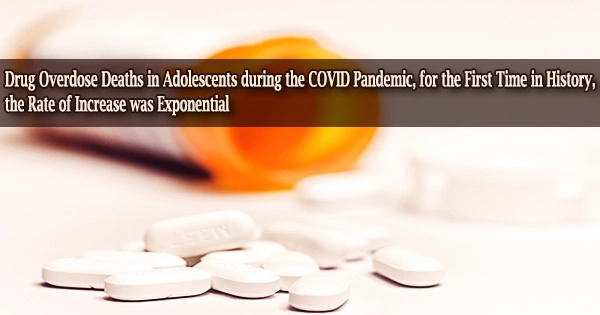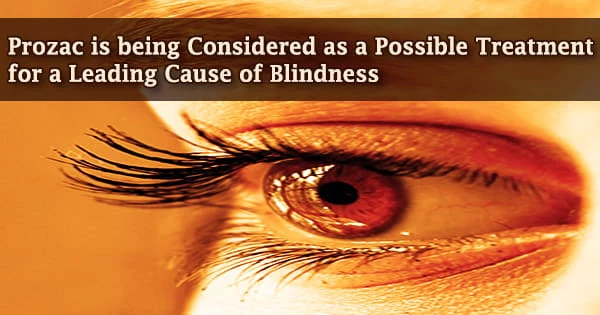According to a recent UCLA study, the rate of overdose deaths among U.S. teenagers nearly quadrupled in 2020, the first year of the COVID epidemic, and increased another 20% in the first half of 2021, compared to the ten years before to the pandemic, even while drug use remained relatively consistent.
Even though rates of illicit drug use among teens are at all-time lows, the teen drug death rate has seen an exponential rise for the first time in recorded history, according to lead author Joseph Friedman, an addiction researcher and M.D. and Ph.D. candidate at UCLA’s David Geffen School of Medicine.
Since 1999, about 841,000 people have died as a result of a drug overdose. In the United States, there were 70,630 drug overdose deaths in 2019. From 2018 (20.7 per 100,000) to 2019 (21.6 per 100,000), the age-adjusted rate of overdose deaths increased by more than 4%.
“Drug use is becoming more dangerous, not more common,” Friedman said. “The increases are almost entirely due to illicit fentanyls, which are increasingly found in counterfeit pills. These counterfeit pills are spreading across the nation, and teens may not realize they are dangerous.”
The study is published in JAMA.
Drug overdose deaths per 100,000 population for teenagers aged 14 to 18 years were calculated using the CDC WONDER (Centers for Disease Control and Prevention Wide-Range Online Data for Epidemiologic Research) database.
They discovered 518 deaths among adolescents in 2010, a rate of 2.4 per 100,000, and a constant rate of 492 deaths (2.36 per 100,000) per year through 2019. In 2020, there were 954 fatalities (4.57 per 100,000), while in early 2021, there were 1,146 deaths (5.49 per 100,000).
Drug use is becoming more dangerous, not more common. The increases are almost entirely due to illicit fentanyls, which are increasingly found in counterfeit pills. These counterfeit pills are spreading across the nation, and teens may not realize they are dangerous.
Joseph Friedman
Broken down by ethnicity and race:
- Among American Indian/Alaska Natives, there were 11 deaths (4.86 per 100,000) in 2010 14 (6.88) through 2019, 16 (7.87) in 2020, and 24 (11.79) in 2021
- Among Black/African Americans, the numbers were 24 (0.70 per 100,000) in 2010, 46 (1.49) through 2019, 114 (3.69) in 2020, and 96 (3.10) in 2021
- Among Latinos, they were 62 (1.38) in 2010, 136 (2.68) through 2019, 276 (5.35) in 2020, and 354 (6.98) in 2021
- Among whites, they were 412 (3.32) in 2010, 281 (2.50) through 2019, 521 (4.67) in 2020, and 604 (5.36) in 2021.
The disparity between the totals for fatalities and rates and the racial/ethnic breakdown is due to a small number of individuals who were from racial/ethnic groupings that were not listed in the study or simply had missing racial/ethnicity details.
Friedman pointed out that fake versions of prescription medications like Xanax, Percocet, and Vicodin, whose strength varies, also contributed to the rise in overdose deaths.
“Teens urgently need to be informed about this rising danger,” Friedman said. “Accurate information about the risk of drugs needs to be presented in schools. Teens need to know that pills and powders are the highest risk for overdose, as they are most likely to contain illicit fentanyls. Pills and powders can be tested for the presence of fentanyls using testing strips, which are becoming more widely available.”
He also believes that education and access to naloxone, which may reverse overdoses, are required in schools and other areas where teenagers congregate.
Some limitations limit the findings. The observational nature of the study’s design makes it impossible to prove causation, race, and ethnicity may have been mistakenly allocated, 2021 results were provisional and included scaled data from January to June, and some of the groups analyzed had tiny numbers.
Furthermore, the role of suicidal ideation, social isolation, and other pandemic-specific factors could not be determined. This study was financed by the UCLA Medical Scientist Training Program, the National Institute on Drug Abuse (K01-DA050771), and the Korein Foundation.
Chelsea Shover, Dr. Helena Hansen, and Dr. David Schriger of UCLA; Morgan Godvin of the Portland Public Safety Coordinating Council; and Joseph Gone of Harvard University are study co-authors.
















